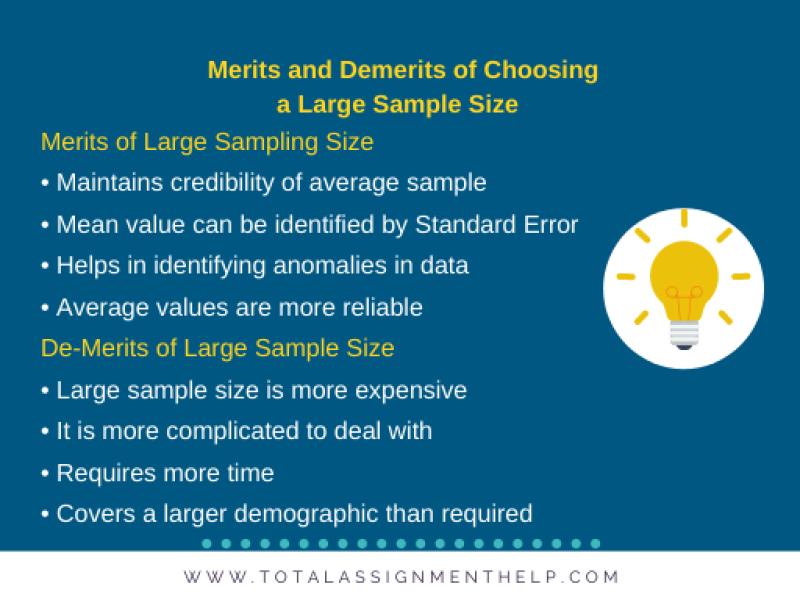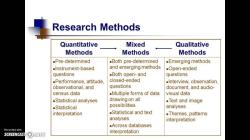How big of a sample do you need to give results?
The necessary sample size for meaningful results in research depends on several factors, including the research objectives, the level of confidence and precision required, the variability of the population, and the statistical methods used. To determine the appropriate sample size, you typically need to consider the following:
Level of Confidence (Confidence Interval): The level of confidence you desire influences the margin of error (confidence interval) in your estimate. Common confidence levels are 95% and 99%, corresponding to a 5% and 1% margin of error, respectively.
Margin of Error (Precision): The margin of error represents the maximum allowable difference between the sample estimate and the true population parameter. The smaller the margin of error, the larger the required sample size.
Population Variability: The variability or spread of the data in the population affects the required sample size. A more variable population requires a larger sample to achieve the same level of precision.
Population Size: In some cases, the size of the population being studied can influence the required sample size. When the population is large (typically over 100,000), you can often treat it as infinite, simplifying the calculations.
Desired Statistical Confidence: Different types of statistical analyses and hypothesis tests may require varying levels of statistical confidence. For some analyses, you might require a larger sample to achieve a specific level of confidence.
Expected Effect Size: When you are studying an effect or difference between groups, the size of that effect can impact the required sample size. A larger effect size may require a smaller sample.
Type I and Type II Error Rates: Researchers may specify acceptable levels for Type I (false positive) and Type II (false negative) errors. Lower error rates can necessitate larger sample sizes.
Research Goals: The goals of your research, such as exploratory research, descriptive research, or hypothesis testing, can influence the required sample size. More ambitious research goals may require larger samples.
Resource Constraints: Practical considerations, including time, budget, and the availability of participants, can limit the sample size. Researchers often need to balance statistical requirements with available resources.
To calculate the necessary sample size, you can use sample size formulas specific to your research design, such as those for estimating proportions, means, or comparing groups. The formulas take into account the factors mentioned above, including the desired level of confidence and margin of error.
It's common to use statistical software or online calculators to determine the sample size based on your specific research parameters. Alternatively, consulting with a statistician or using statistical power analysis can help ensure that your sample size is appropriate for achieving meaningful and statistically significant results.
Keep in mind that the larger the sample size, the more precise your estimates are likely to be. However, the goal is to find the right balance between achieving statistical significance and practicality within your research constraints.
Sample Size Determination: How Large a Sample Do You Need?
Determining the appropriate sample size is crucial for conducting meaningful research and obtaining reliable results. The sample size should be large enough to accurately represent the population being studied, but not so large as to be impractical or cost-prohibitive. Several factors influence the ideal sample size, including:
1. Research Question and Objectives: The nature of the research question and the desired level of precision in the results significantly impact the sample size. For instance, exploratory research may require a smaller sample to gather preliminary data, while hypothesis testing or descriptive research often demands a larger sample for accurate estimation and statistical significance.
2. Population Size and Variability: The size of the target population and the expected variability within the population play a role in sample size determination. A larger population generally allows for a smaller sample size, while a more diverse or heterogeneous population may require a larger sample to capture the range of characteristics and opinions.
3. Confidence Level and Margin of Error: The desired confidence level and margin of error are crucial factors in determining the sample size. A higher confidence level indicates greater certainty in the results, but it also necessitates a larger sample. Similarly, a smaller margin of error implies more precise estimates, requiring a larger sample to achieve this level of precision.
4. Statistical Power and Effect Size: Statistical power refers to the ability of a study to detect a true effect if it exists. A larger sample increases statistical power, reducing the risk of Type II errors (failing to detect a real effect). Effect size indicates the magnitude of the relationship between variables. A larger effect size generally requires a smaller sample size to achieve adequate statistical power.
5. Practical Considerations: Practical considerations, such as budget constraints, time limitations, and accessibility of the target population, may influence the feasible sample size. Researchers need to balance statistical rigor with practical realities to conduct research effectively.
Factors Influencing Sample Size and Result Accuracy
Determining the appropriate sample size is not a straightforward task, as several factors can influence the accuracy of the results:
1. Sampling Method: The sampling method used to select participants can impact the representativeness of the sample and the accuracy of the results. Random sampling methods, such as simple random sampling or stratified sampling, generally yield more representative samples compared to convenience sampling or purposive sampling.
2. Measurement Error: Measurement error refers to inaccuracies in the data collection process. Reliable and valid measurement tools minimize measurement error and enhance the accuracy of the results.
3. Data Analysis Techniques: Appropriate statistical analysis techniques tailored to the research question and data type are crucial for extracting meaningful insights from the data. Improper data analysis can lead to misleading conclusions.
4. Response Rates: Response rates, especially in survey research, can impact the accuracy of the results. Low response rates may introduce bias, as those who respond may differ systematically from those who do not.
5. Non-response Bias: Non-response bias occurs when individuals who do not respond to a survey or study differ systematically from those who do. This bias can distort the results and affect the generalizability of the findings.
Precision and Sample Size: Finding the Right Balance
Precision and sample size are closely intertwined in research. A larger sample generally leads to more precise estimates of population parameters, but it also increases the cost and time required for the study. Researchers need to strike a balance between precision and sample size, considering the specific research question, available resources, and the desired level of accuracy.
Tips for Determining Sample Size:
Seek expert guidance: Consult with statisticians or experienced researchers to determine an appropriate sample size for your specific research project.
Utilize sample size calculators: Leverage online sample size calculators or statistical software to estimate the sample size based on your research parameters.
Pilot test the survey: Conduct a pilot test with a small sample to assess the effectiveness of the survey questions and identify potential issues before proceeding with the full-scale survey.
Consider stratified sampling: Divide the population into subgroups (strata) and draw samples from each stratum to ensure a representative sample.
Adjust sample size during the research process: Be prepared to adjust the sample size during the research process based on emerging findings or unexpected challenges.












